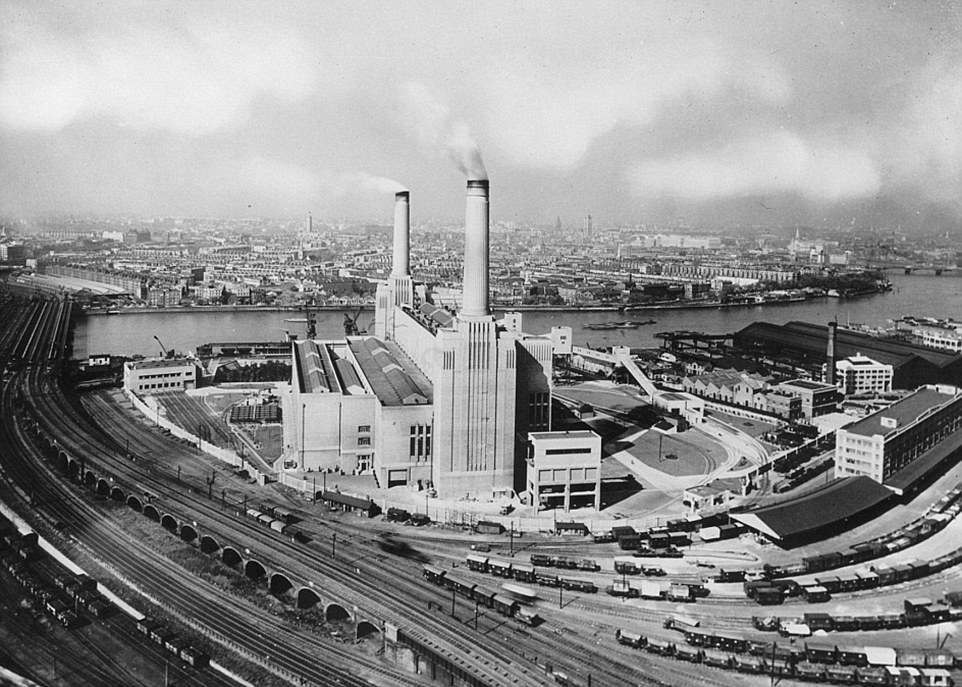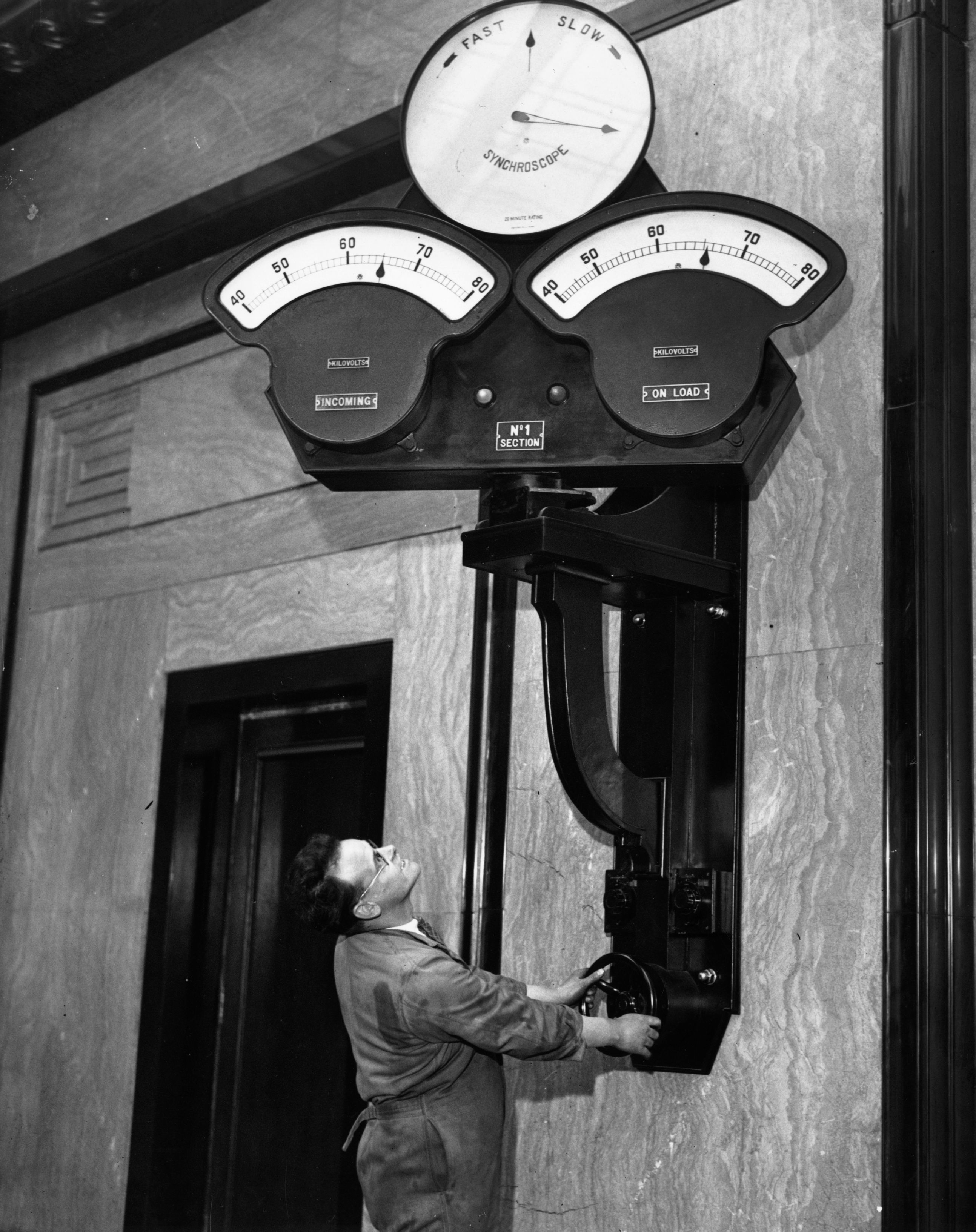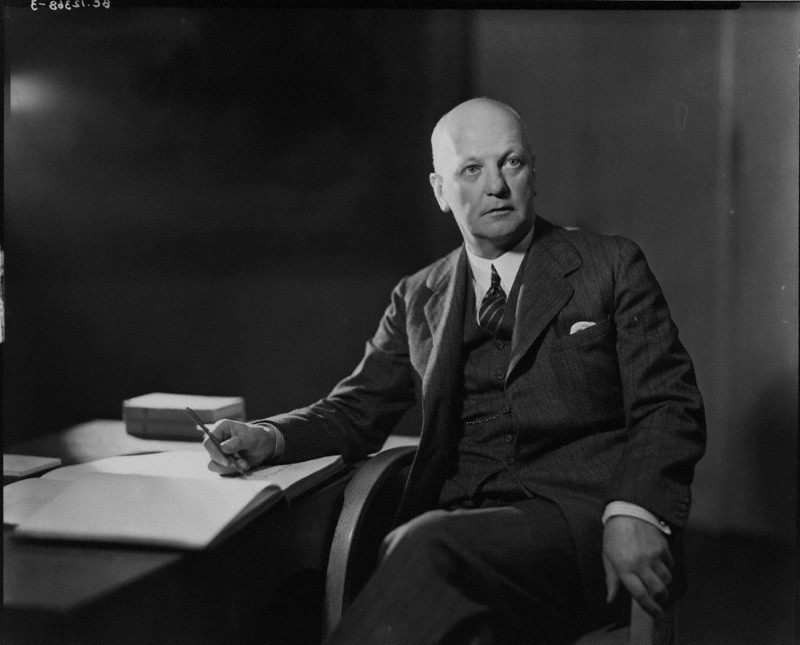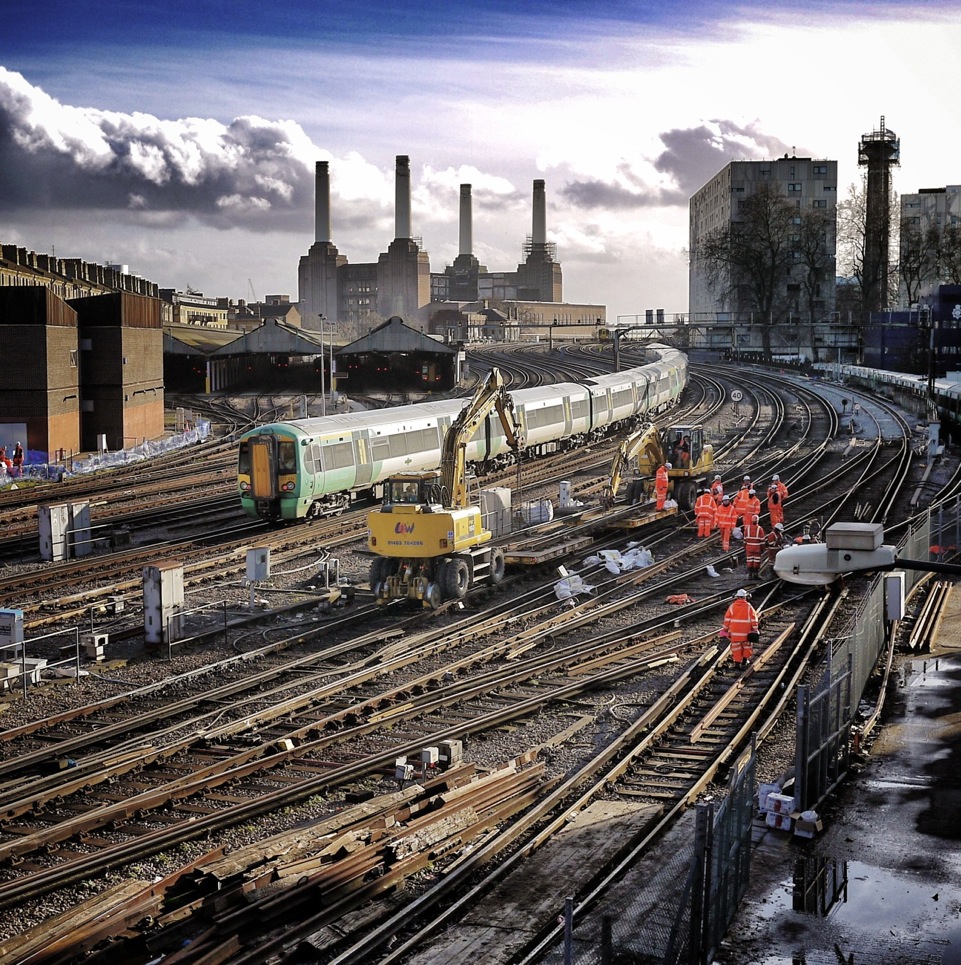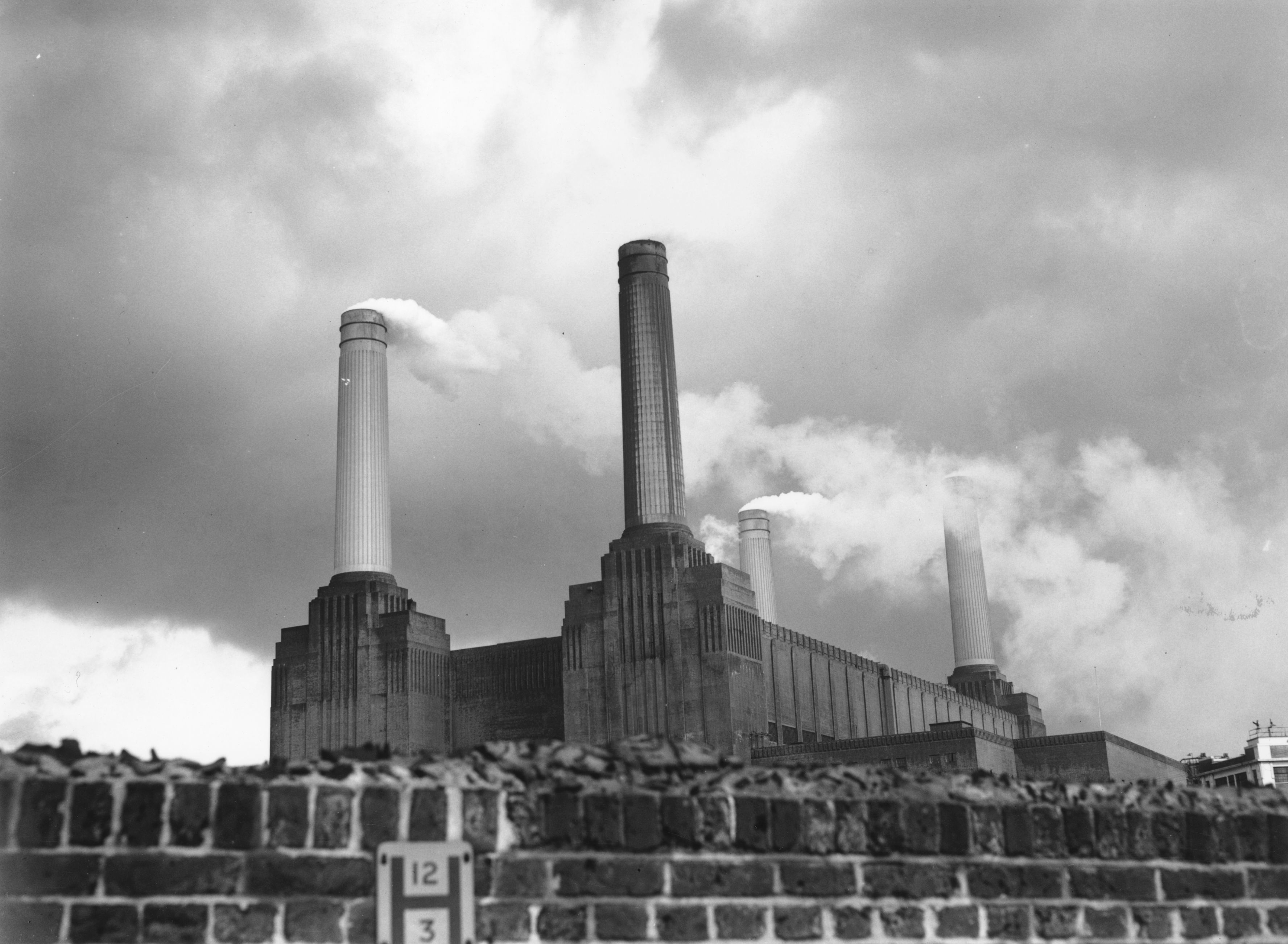
The Gothic-style towers of Battersea Power Station, on the bank of the River Thames. Designed by leading architect Giles Scott, the impressive building is due for closure in 1983. (Photo by Hales/Getty Images)
It was once said that Battersea Power Station in South London looks a bit like a billiard table turned upside down. It’s not a particularly good discription as the proportions aren’t right at all. Although if it was a billiard table and the right way up and it was before 1953, it would have fallen over because it only had two legs.
Battersea Power Station as we know it today, with its familiar four chimney layout, was actually two individual power stations – Battersea ‘A’ and Battersea ‘B’ but constructed eventually in the form of a single building with the last of the iconic fluted concrete chimneys only being raised as late as 1955.
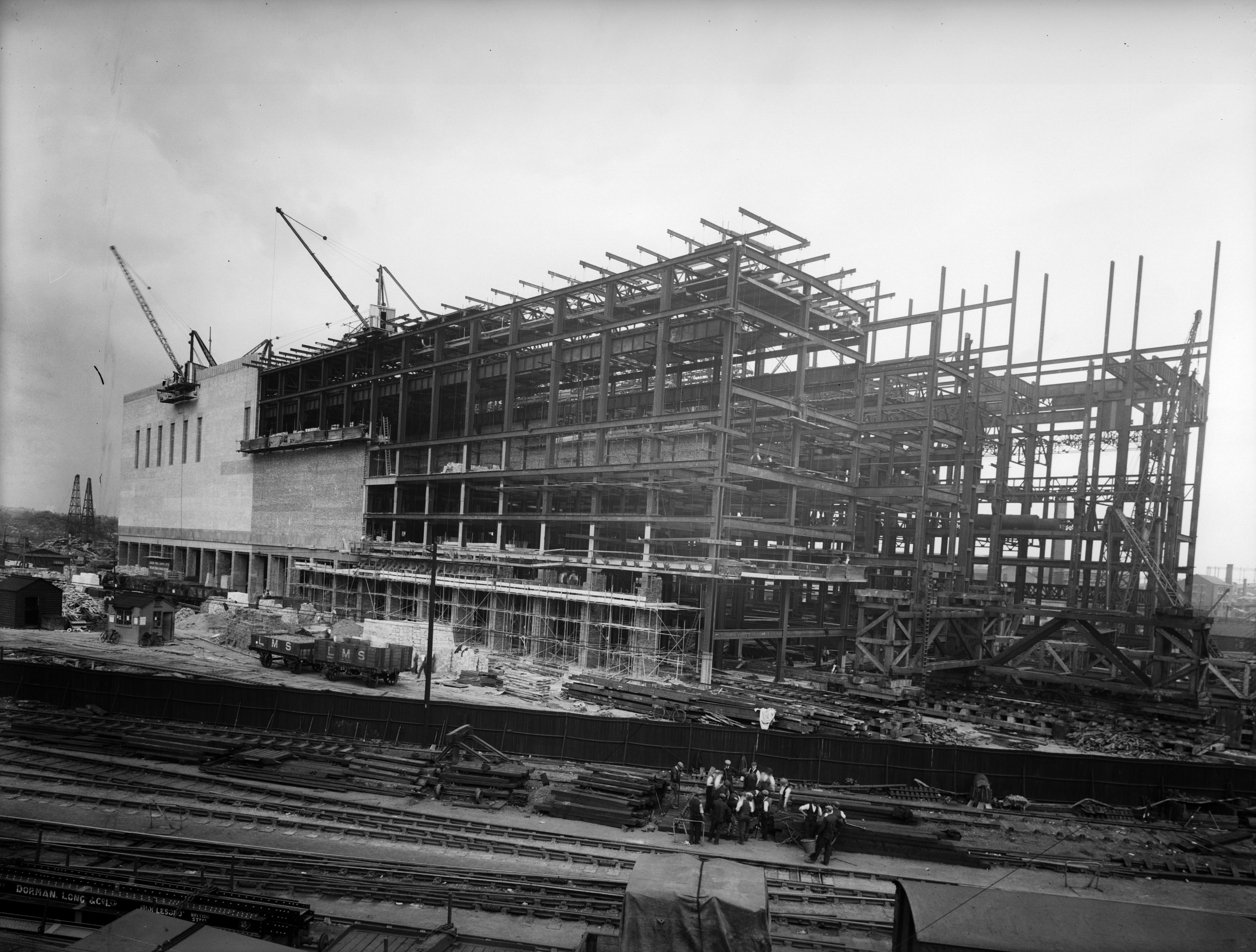
circa 1934: Battersea Power Station under construction in London. The building was designed by leading architect Giles Scott in the Gothic style. (Photo by Fox Photos/Getty Images)
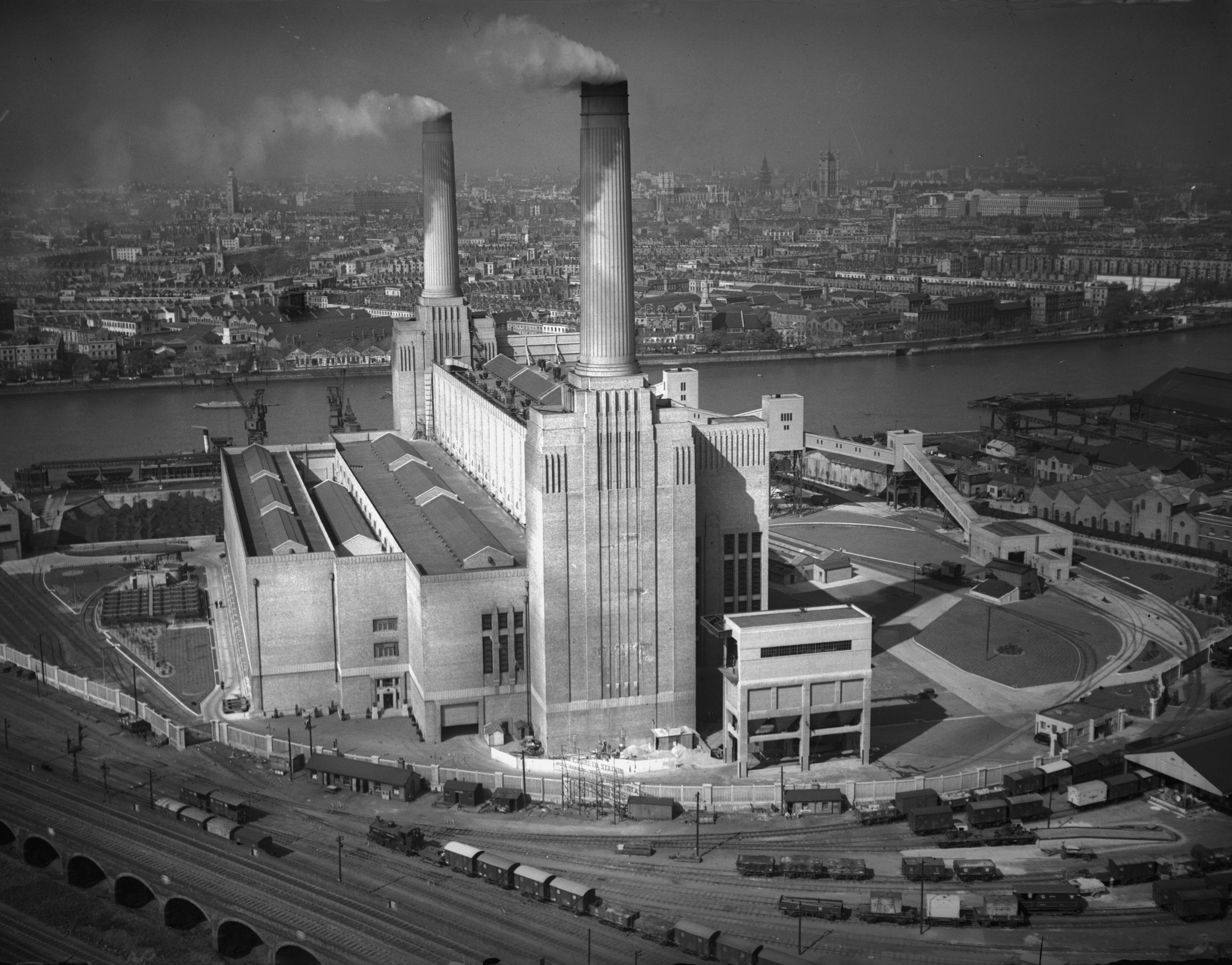
11th May 1934: Battersea Power Station on the River Thames in London, designed by architect Giles Gilbert Scott. The other two towers were not added until 1953, forming the familiar four-chimneyed silhouette. (Photo by Fox Photos/Getty Images)
Most of the extraordinary detail inside the power station, that once made the London writer Felix Barker to compare the power station to the great church of Sainte-Cécile at Albi in the south of France, has now gone – obliterated, by over twenty-five years of seemingly complete indifference to one of London’s famous landmarks by the various property development companies who have sold it on rather than developing it.
During the 1920s electricity was supplied to London by small companies that were often dedicated to single industries or groups of factories. Any excess power was then sold to the public. However due to differing standards of voltage and frequency that were being provided, parliament in 1925, decided that the power grid should be a single system.
Several private power companies pre-empted the feared nationalisation (which wasn’t to arrive until after the war in 1948 with the British Electricity Authority) by forming the London Power Company which planned several very large stations for London. The first of these they came up with was in the Battersea area between the Thames and the Nine Elms Lane.
In 1928, with the architect Theo J Halliday in charge, construction started on the power station despite furious opposition by public figures such as the Archbishop of Canterbury. To appease the public, who were worried about the general size of the building and the pollution it might cause, the London Power Company hired the famous architect Sir Giles Gilbert Scott of Liverpool Cathedral and the red telephone box fame. He was known to the press as ‘architect of the exterior’ and it was his idea to turn the previously planned square chimneys into the fluted classical columns we know today.

April 1934: A Navy cadet training ship on the Thames at Battersea, London with Albert bridge in the background. (Photo by Fox Photos/Getty Images)
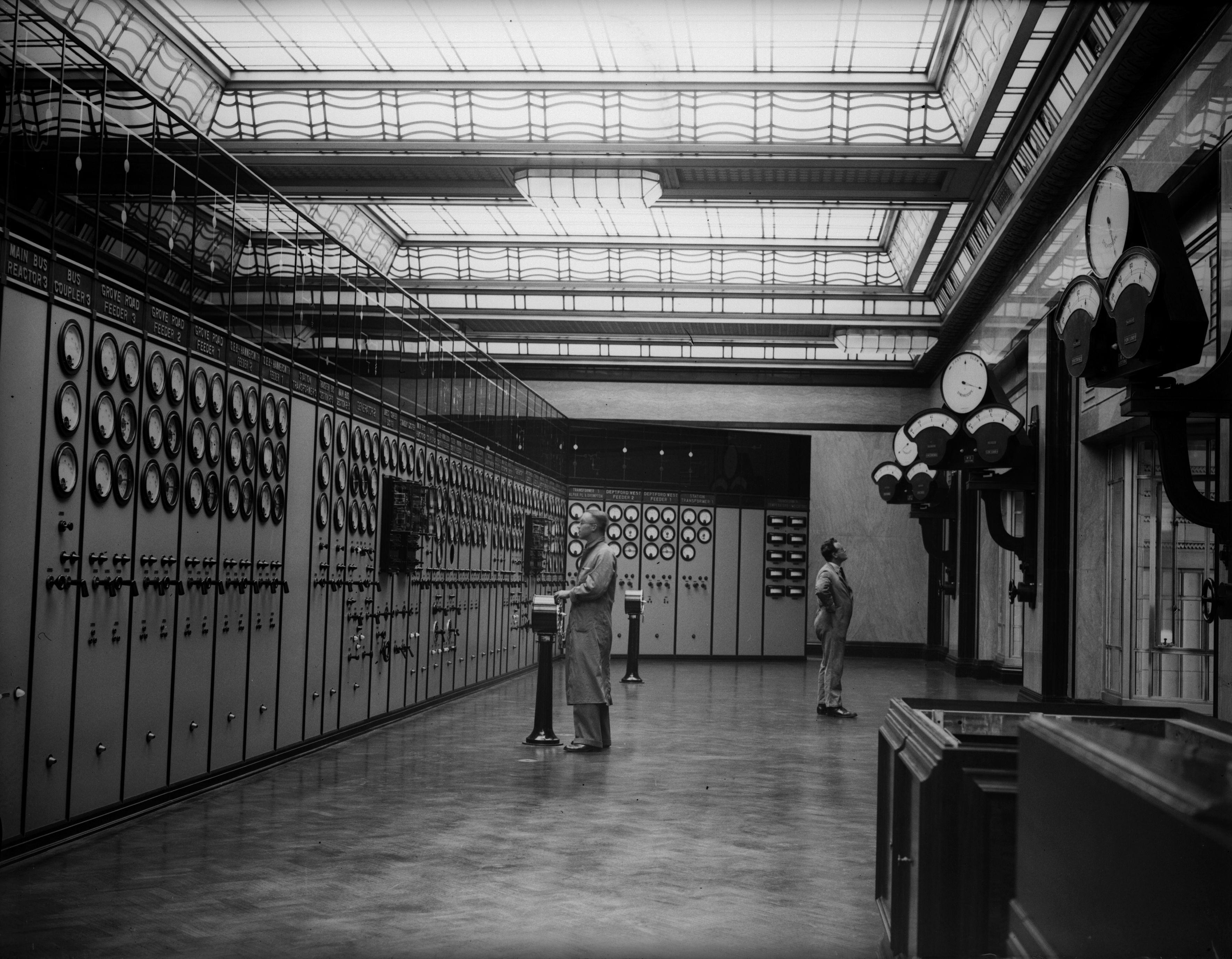
10th July 1933: The control room of Battersea Power Station, from which the feeders supply various regions of London with electricity. (Photo by Fox Photos/Getty Images)
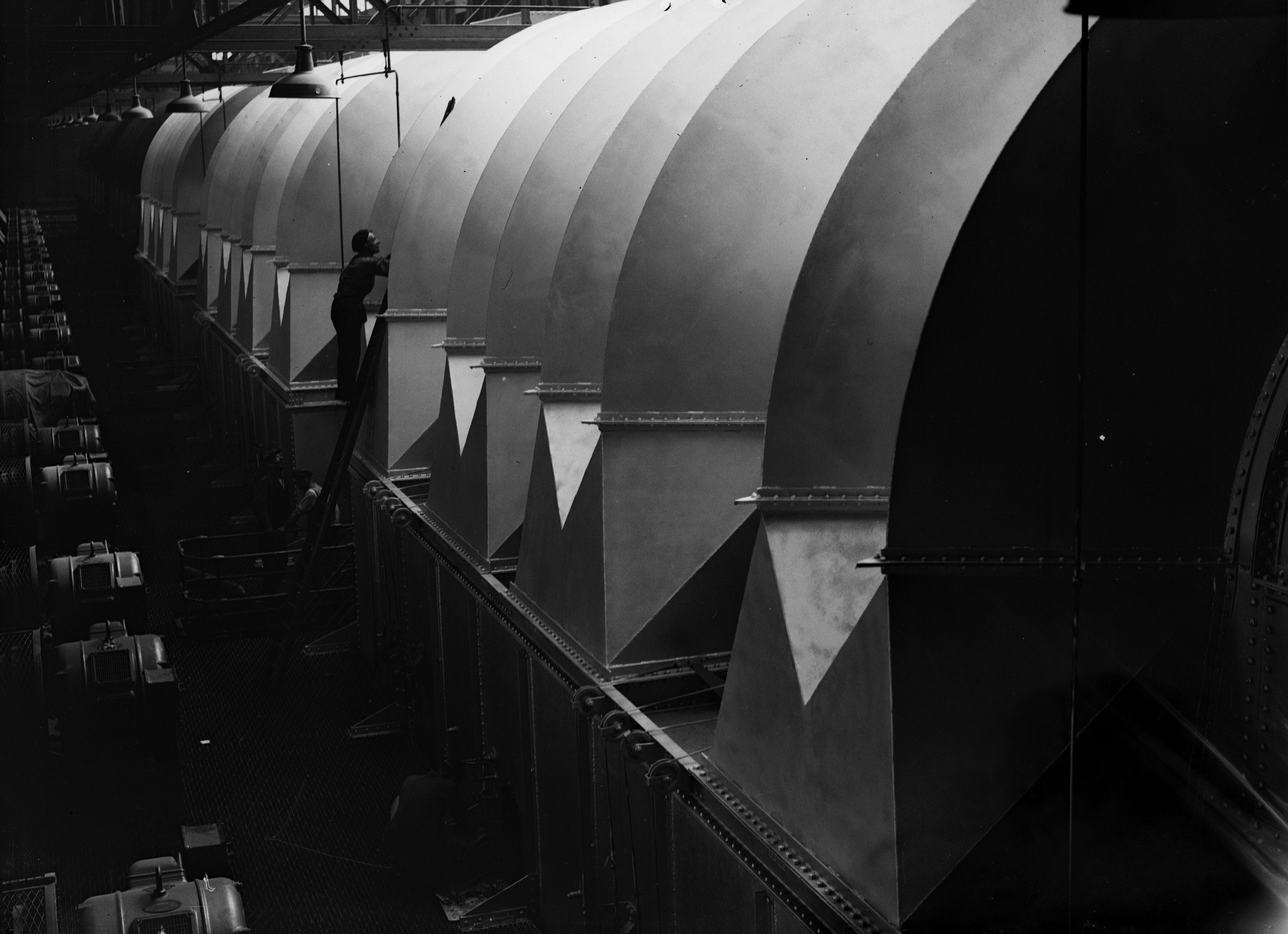
10th July 1933: A workman inside Battersea Power Station in London. (Photo by Fox Photos/Getty Images)
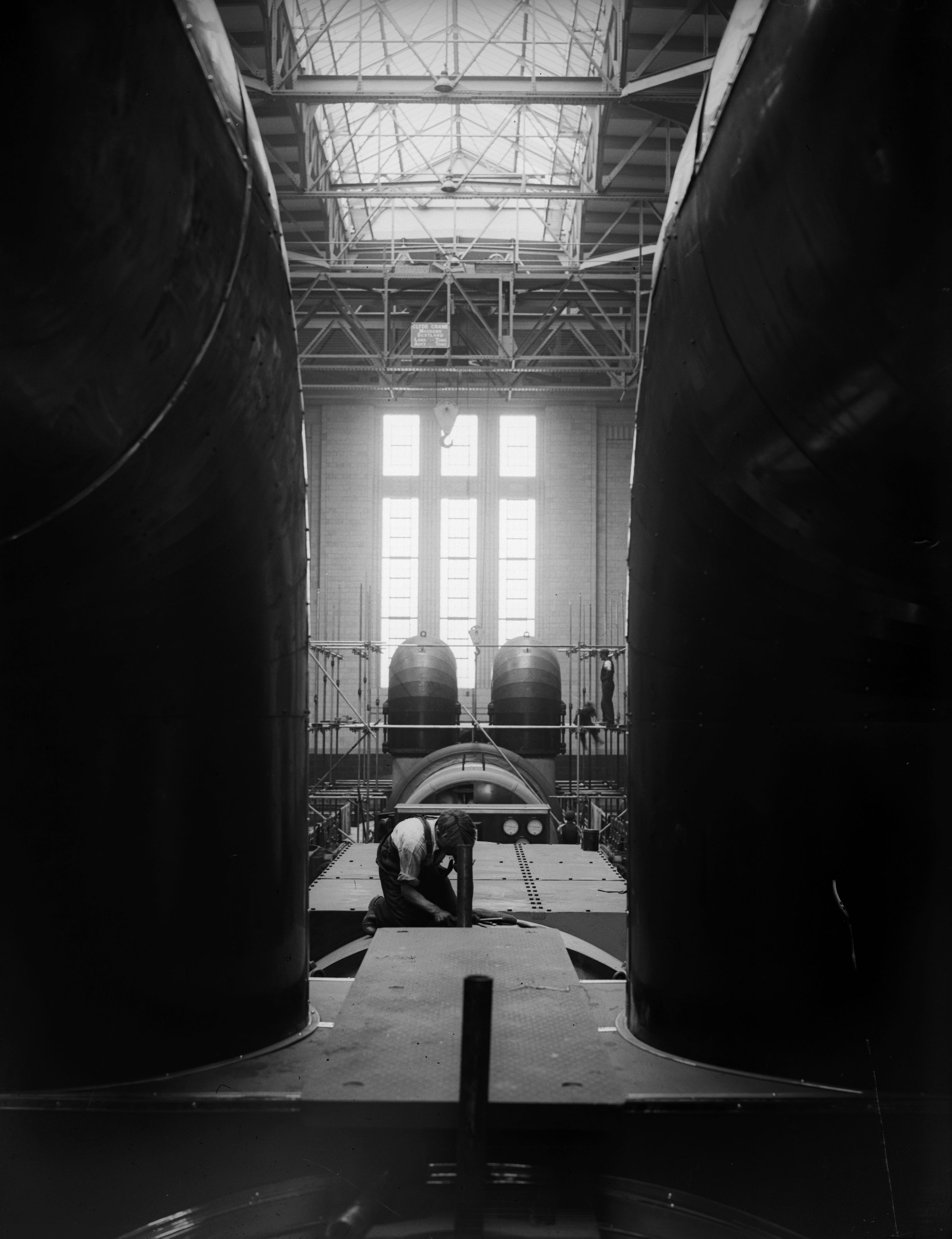
10th July 1933: A worker inside London’s Battersea Power Station. (Photo by Fox Photos/Getty Images)
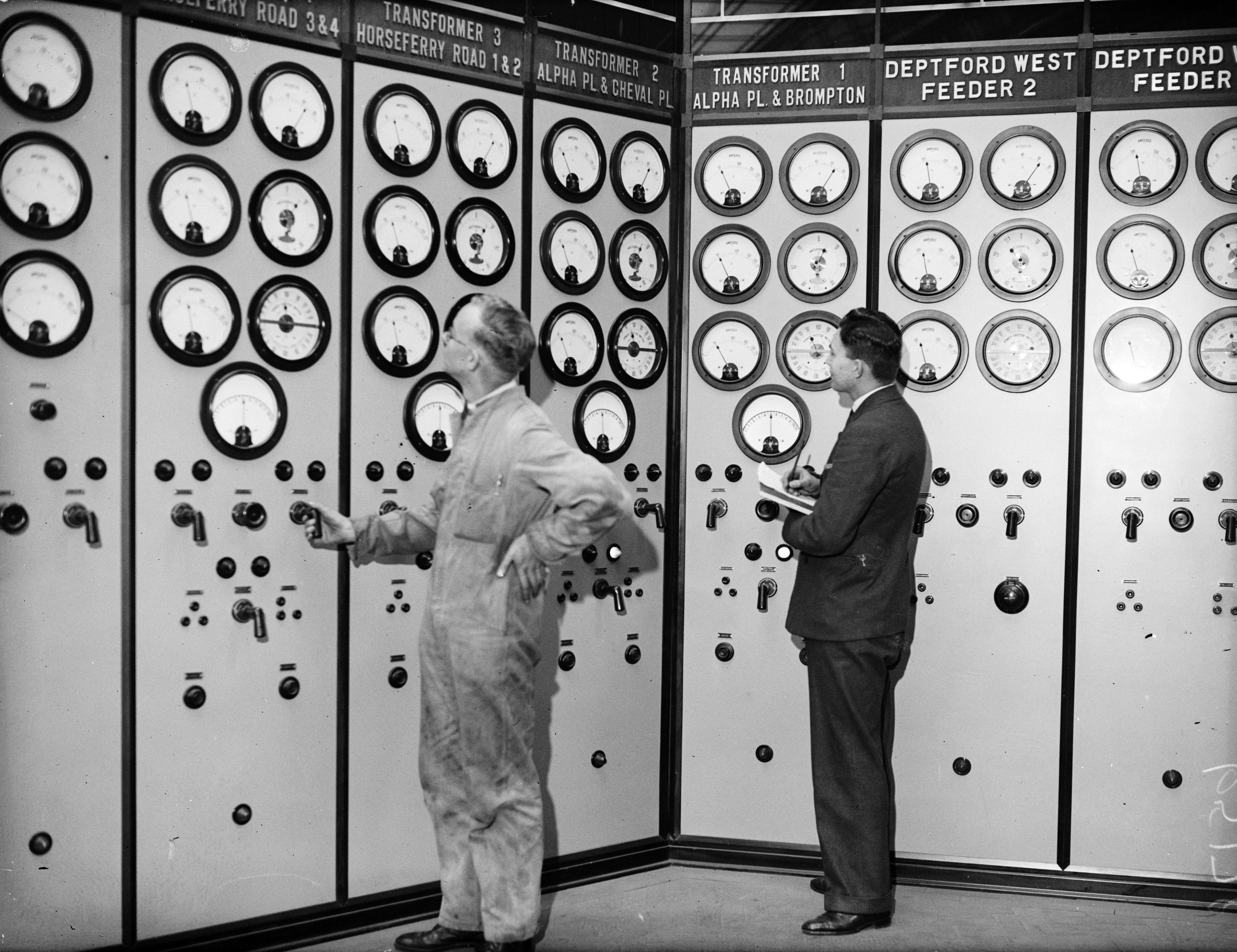
10th December 1932: Technicians consult a wall of dials for readings from the transformers and feeders at the Battersea Power Station, London. (Photo by Fox Photos/Getty Images)
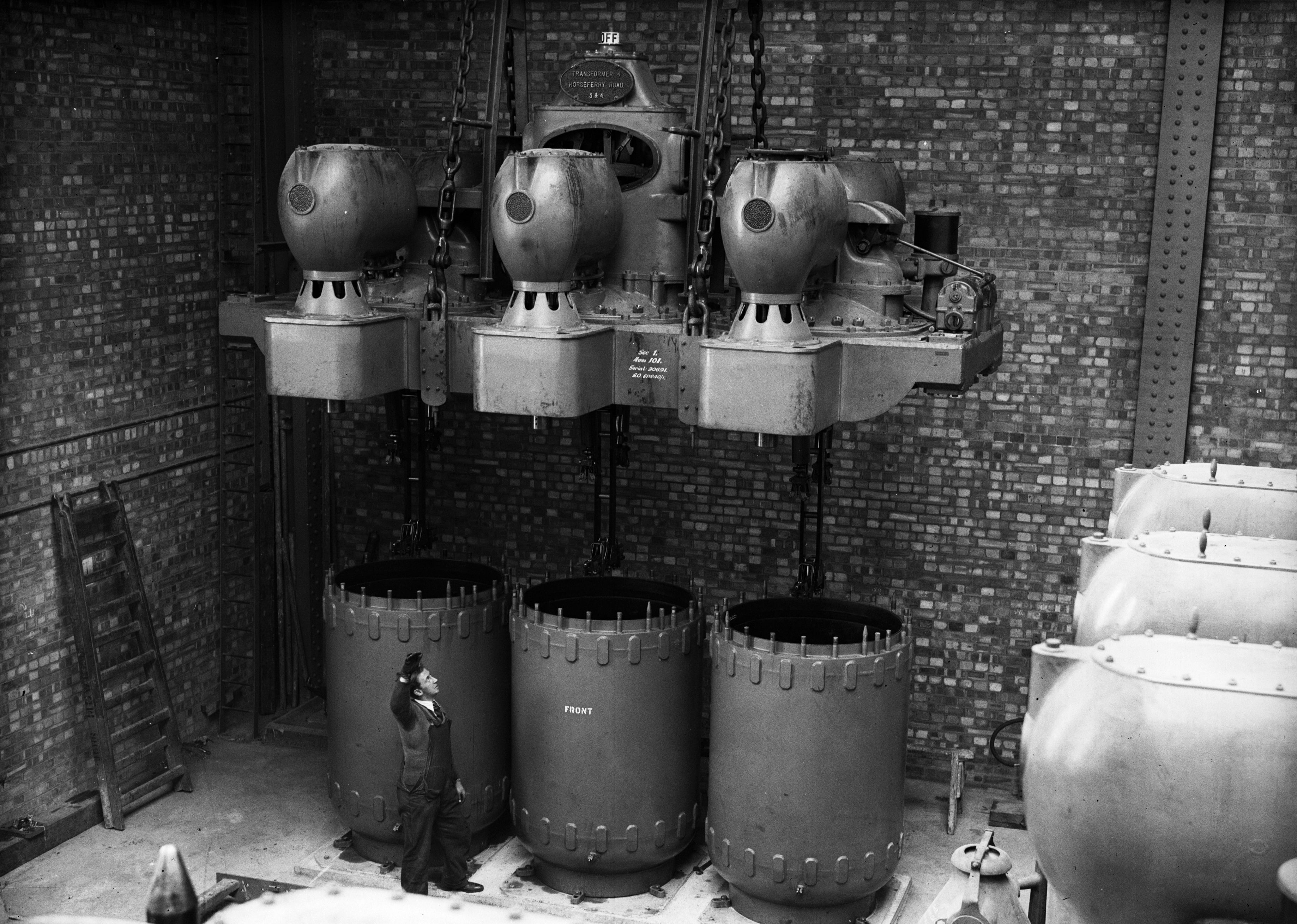
28th April 1932: A 15,500 volt circuit breaker at Battersea Power station, London being raised to show how contact is made with oil in the drums below when in lowered position. The man beside it gives an idea of its true size. (Photo by Fox Photos/Getty Images)
Giles Gilbert Scott actually wanted square, brick chimneys, but had to live with circular concrete ones. He was appointed to the project late in the game, and the foundations were already in place, which were not designed to support heavy brick chimneys. The circular concrete chimneys had been planned by the engineer Pearse, and are much lighter than brick ones. Scott was unhappy with the circular chimneys but went on to design brick tower bases that are perhaps the most architecturally pleasing features of the building. Scott got to design Bankside (Tate Modern) from scratch later in the 1960s and went with a square brick chimney for this design.
When Battersea ‘A’ started generating power for the first time in 1933 the brick solidity of the building was already getting fulsome praise from the public, as it has, generally, ever since. The huge beautiful red-brick solidity of the power station, along side Halliday’s extraordinary art deco interior, which included bronze doors showing figures representing Power and Energy opening on to a marble turbine hall, influenced the writer HJ Massingham’s brilliant description of the building as ‘the Cathedral of Electrons’.
Work started on Battersea ‘B’ Station soon after the war, still under the auspices of the London Power Company. However by the time it completed building opened the UK’s electric supply industry had been nationalised into the hands of initially the British Electricity Authority which subsequently became, in 1955, the Central Electricity Generating Board and then finally (I think) the Central Electricity Generating Board in 1957.
In 1964 Battersea Power Station had a bad fire that caused power failures throughout London. Unfortunately it was due to be the opening night of BBC2 which in the end had to be delayed until the following day at 11am.
Incidentally Battersea Power Station is often described as Europe’s largest brick building but a quick Google describes two other buildings also as’Europe’s largest brick building’ – namely The Britannia Grand Hotel in Scarborough and the Malbark Castle in Poland.
The aforementioned Church of Sainte-Cecile in Albi, however, is often described as the world’s largest brick building, and as France is in Europe, that’s the building I’m going for. Churches though, are meant to look great. Power Stations, whether they have two or four chimneys, generally, aren’t.
Would you like to support Flashbak?
Please consider making a donation to our site. We don't want to rely on ads to bring you the best of visual culture. You can also support us by signing up to our Mailing List. And you can also follow us on Facebook, Instagram and Twitter. For great art and culture delivered to your door, visit our shop.
